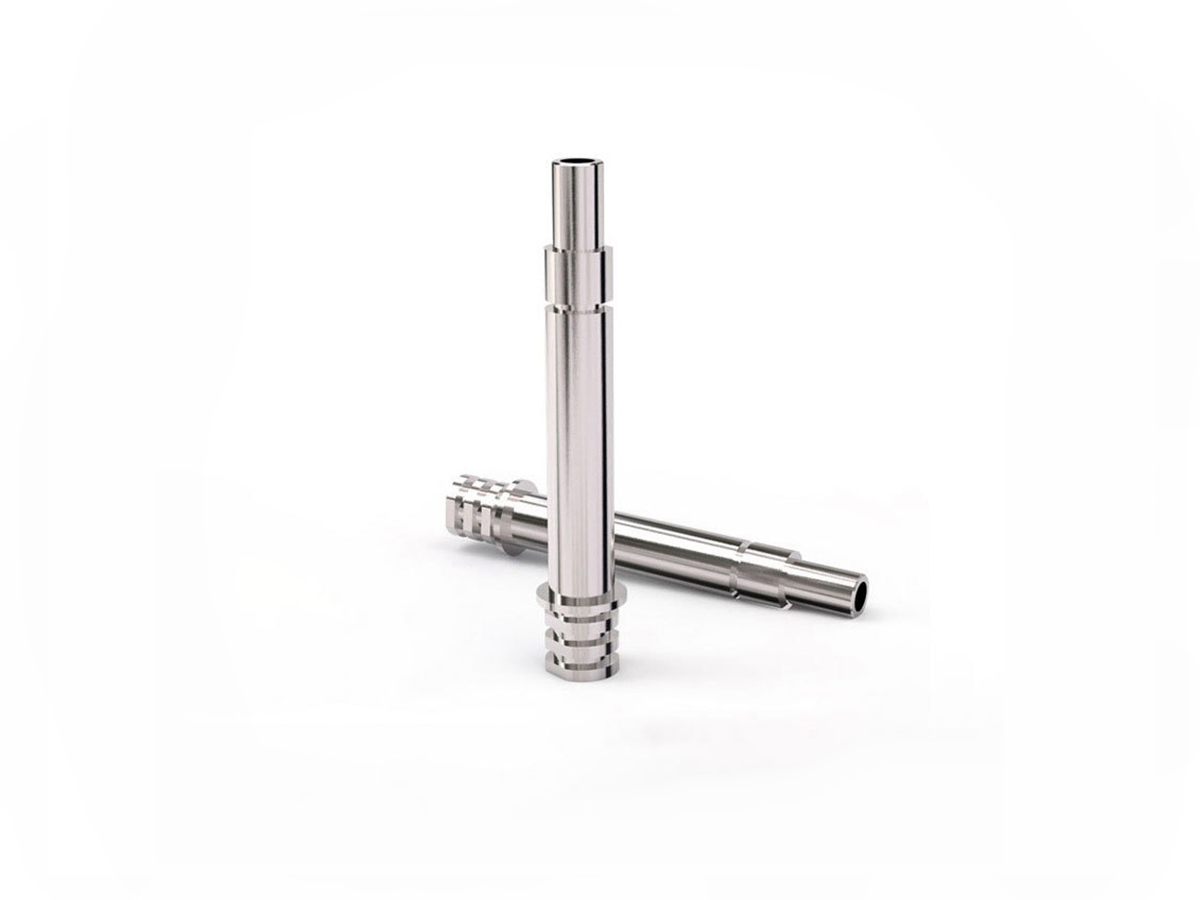Low-Volume CNC Machining for High-Quality Medical Device Production
Introduction to CNC Machined Medical Device Components
Medical devices demand extraordinary precision, reliability, and stringent quality standards, making custom CNC machining essential for low-volume production. CNC machining enables the creation of precise medical components such as surgical instruments, orthopedic implants, diagnostic equipment parts, medical fittings, and minimally invasive tools. Common materials chosen include medical-grade stainless steel (SUS316L, SUS304), titanium alloys (Ti-6Al-4V), aluminum alloys (6061-T6), and engineering plastics (PEEK, Acetal), each offering exceptional biocompatibility, corrosion resistance, and durability.
With expert CNC machining services, manufacturers achieve high-precision, low-volume production of complex medical devices while meeting rigorous medical industry standards.
Material Performance Comparison for Medical Device Components
Material | Tensile Strength (MPa) | Yield Strength (MPa) | Biocompatibility (ISO 10993) | Corrosion Resistance (ASTM F2129) | Typical Applications | Advantages |
|---|---|---|---|---|---|---|
480-620 | 170-310 | Excellent | Outstanding (>1000 mV breakdown potential) | Surgical tools, implants | Superior corrosion resistance, biocompatible | |
950-1100 | 880-950 | Excellent | Excellent (>1200 mV breakdown potential) | Orthopedic implants, bone screws | High strength-to-weight ratio, superior biocompatibility | |
310-345 | 276 | Good | Good (>800 mV breakdown potential) | Diagnostic device components, enclosures | Lightweight, easy machinability | |
90-100 | N/A | Excellent | Excellent (chemically inert) | Surgical tools, spinal implants | Exceptional chemical resistance, radiolucency |
Material Selection Strategy for CNC Machined Medical Components
Selecting the appropriate materials is crucial for meeting the unique requirements of medical device applications:
Stainless Steel SUS316L is ideal for surgical tools and implants due to its outstanding corrosion resistance, biocompatibility, and ease of sterilization.
Titanium Ti-6Al-4V offers superior biocompatibility, strength (up to 1100 MPa), and lightweight characteristics, making it suitable for orthopedic implants and surgical screws.
Aluminum 6061-T6 provides lightweight construction and excellent machinability, making it suitable for diagnostic equipment housings, frames, and non-implantable device components.
PEEK Plastic exhibits excellent biocompatibility, chemical inertness, and radiolucency, which makes it ideal for implants and specialized surgical instruments requiring compatibility with imaging systems.
CNC Machining Processes for Medical Device Production
CNC Machining Process | Dimensional Accuracy (mm) | Surface Roughness (Ra μm) | Typical Applications | Key Advantages |
|---|---|---|---|---|
±0.005 | 0.2-0.8 | Complex implants, surgical tools | Exceptional precision, complex geometry | |
±0.005-0.01 | 0.4-1.2 | Cylindrical medical instruments, pins | High rotational accuracy, excellent surface finishes | |
±0.002-0.005 | 0.1-0.4 | Surgical blades, precision pins | Superior surface finish, ultra-tight tolerances | |
±0.01-0.02 | 0.8-1.6 | Device housings, implant fixation holes | Accurate and repeatable hole placement |
CNC Process Selection Strategy for Medical Device Components
Choosing the optimal CNC machining methods ensures medical device precision, safety, and reliability:
5-Axis CNC Milling delivers exceptional dimensional accuracy (±0.005 mm), enabling complex geometries and intricate details essential for implants and sophisticated surgical tools.
CNC Turning provides precise rotational accuracy (±0.005 mm) crucial for manufacturing cylindrical components, surgical instrument shafts, and pins.
CNC Grinding achieves extremely tight tolerances (±0.002 mm) and mirror-like finishes necessary for surgical blades and precision medical components, minimizing friction and tissue trauma.
Precision CNC Drilling accurately positions critical holes (±0.01 mm) essential for implant fixation, ensuring secure and safe integration in medical procedures.
Surface Treatment Performance Comparison for Medical Device Components
Treatment Method | Surface Roughness (Ra μm) | Biocompatibility (ISO 10993) | Corrosion Resistance (ASTM F2129) | Surface Hardness | Typical Applications | Key Features |
|---|---|---|---|---|---|---|
0.4-1.0 | Excellent | Outstanding (>1200 mV breakdown potential) | N/A | Surgical instruments, implants | Removes contaminants, enhances corrosion resistance | |
0.4-1.0 | Excellent | Excellent (>1000 mV breakdown potential) | HV 400-600 | Aluminum medical device parts | Increased durability, corrosion resistance | |
0.1-0.4 | Excellent | Excellent (>1200 mV breakdown potential) | N/A | Surgical blades, implants | Enhanced surface cleanliness, ultra-smooth finish | |
0.1-0.3 | Excellent | Superior (>1500 mV breakdown potential) | HV 1500-2500 | Surgical instruments, wear-resistant devices | Extremely high wear resistance, biocompatible surfaces |
Surface Treatment Selection for CNC Machined Medical Components
Selecting suitable surface treatments significantly improves medical device safety and performance:
Passivation ensures contaminant-free surfaces and maximized corrosion resistance, critical for stainless steel surgical tools and implants.
Anodizing provides durable and corrosion-resistant coatings (HV 400-600), essential for aluminum-based medical equipment components.
Electropolishing achieves ultra-smooth finishes (Ra ≤0.4 µm), ideal for surgical blades and precision implants to minimize bacterial adhesion and facilitate cleaning.
PVD Coating enhances hardness (HV 1500-2500), significantly improves wear resistance and extends the lifespan of surgical instruments and precision components.
Typical Prototyping Methods for Medical Device Production
CNC Machining Prototyping: Delivers highly accurate prototypes (±0.005 mm) for functional testing and regulatory compliance validation.
Rapid Molding Prototyping: Quickly produces functional prototypes enabling thorough evaluation under real-life surgical conditions.
Metal 3D Printing (Powder Bed Fusion): Facilitates rapid iteration of complex medical component designs (±0.05 mm accuracy), suitable for early-stage evaluations and adjustments.
Quality Assurance Procedures
Coordinate Measuring Machine (CMM) Inspection (ISO 10360-2) verifies precision within ±0.005 mm accuracy.
Biocompatibility Testing (ISO 10993) ensures material safety for medical applications.
Surface Roughness Measurement (ISO 4287) confirms compliance with medical device standards.
Non-Destructive Testing (ASTM E1444, ASTM F601) detects potential component defects.
ISO 13485 Certified Documentation guarantees traceability and compliance with medical device quality standards and regulatory requirements.
Related FAQs:
Which materials are best for medical device CNC machining?
How does CNC machining benefit low-volume medical production?
Which surface treatments ensure medical device safety?
Why prototype medical components?
How is medical device quality controlled in CNC manufacturing?

